News
How Did Our Crops Do This Year?
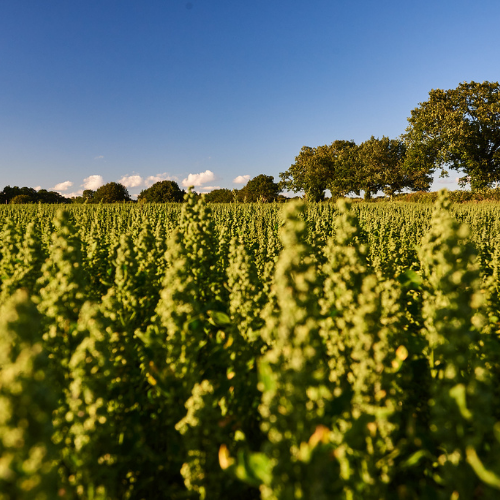
In my last blog post, I shard the progress of our 2020 quinoa crops during the remarkably dry Spring. Some time has since passed, and we thought now would be a good idea to share how our crops have grown and progressed since.
As mentioned previously, this season, we have grown one of the largest areas of quinoa in many years with farmers based all over the UK. For obvious reasons, there was a delay in getting out and about this season. However, once lockdown was lifted with social distancing in place, I was able to get to walk the 1,600 acres of quinoa we had in the ground this year to monitor the development of each crop.
We’ve also been trialling around 20 new candidate quinoa lines this year, on a small scale. When testing these new varieties, we are looking for improvements in the agronomic characteristics such as ease of harvest, early ripening, grain and yield quality. Basically, we’re looking for new quinoa varieties that are well suited to grow in the UK climate and offer advantages to bother the farmer and the consumer. The primary thing we look out for from the consumers perspective is better seed characteristics, so our grains are even better for eating.
So let’s see how our quinoa crops have progressed throughout the summer months.
May
In May, I went to Wolverhampton to assess our very first black quinoa trial and was pleased to see that it was coming along nicely. The plants were growing nicely, and although this new variety does not seem to be quite as vigorous as the white quinoa varieties we have, they were still a nice, deep green colour with a very pretty pink colour in the centre.
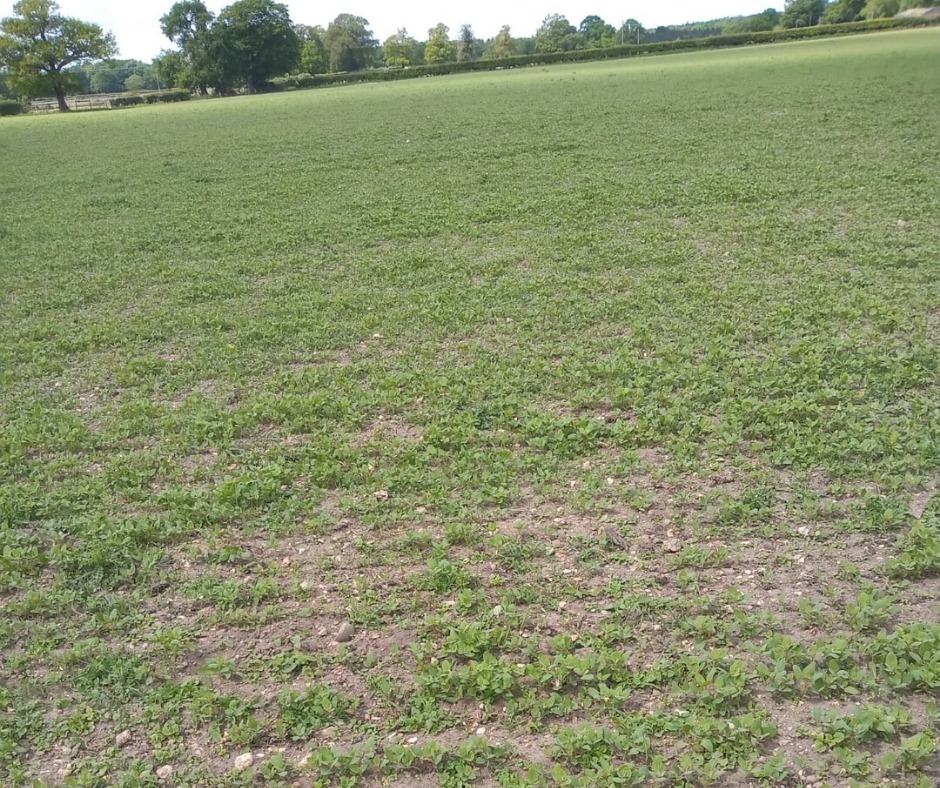
Furthermore, in May, our organic white quinoa crops were also starting to take shape. At this point, these crops were looking healthy and developing rapidly. Despite the crops being very young at this stage, you can still get a good feel for how each crop will perform at harvest.
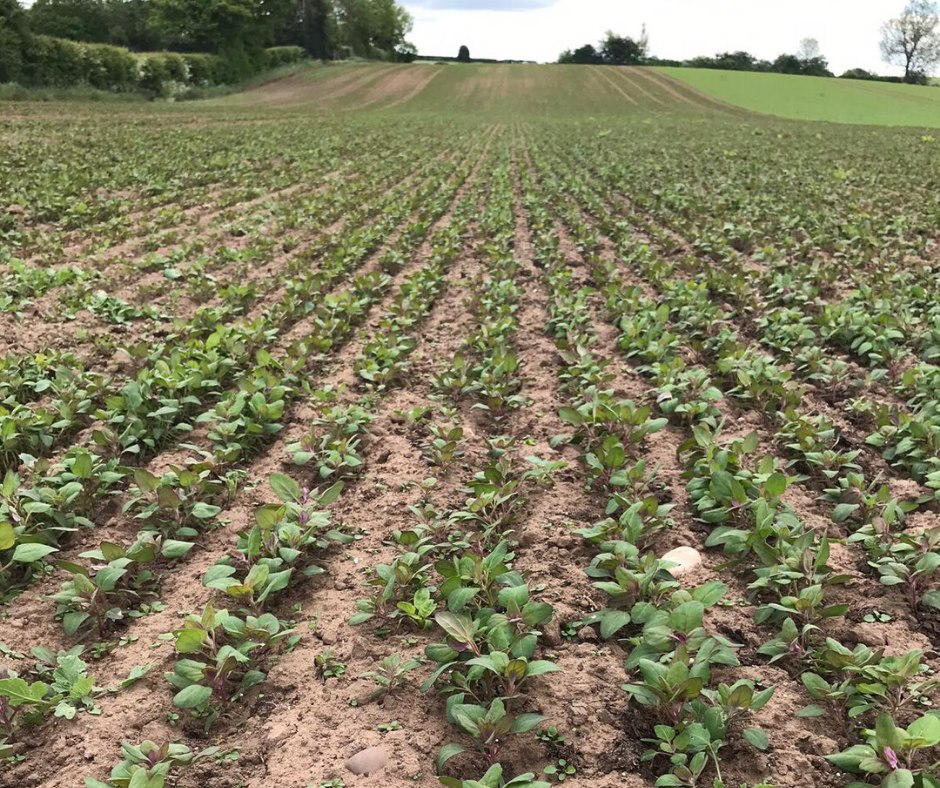
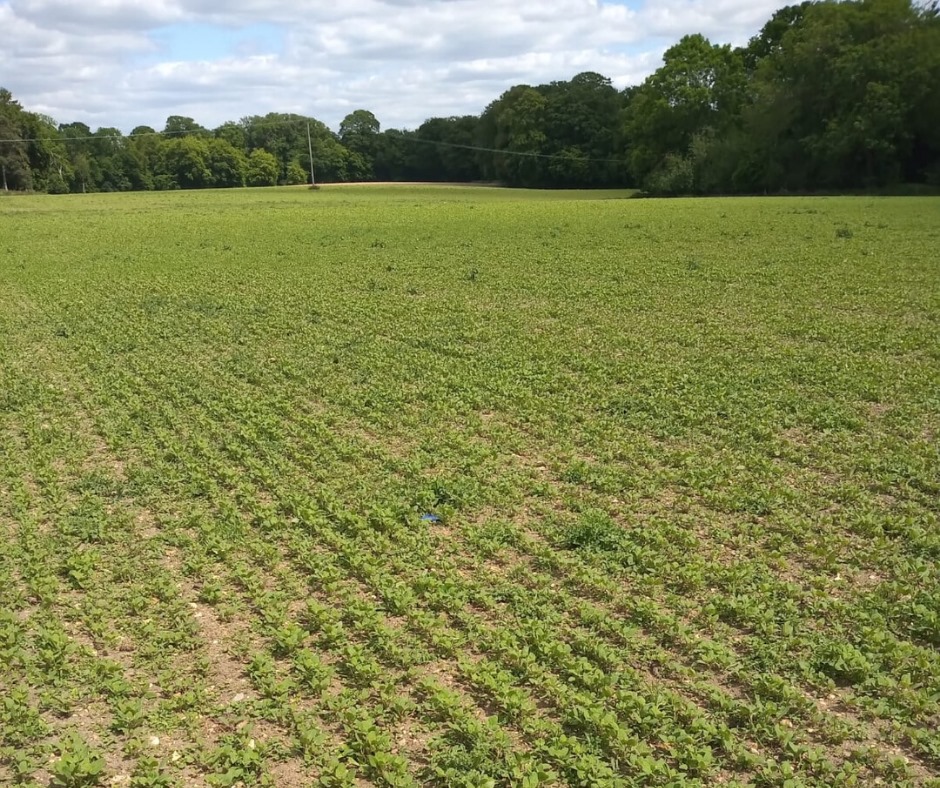
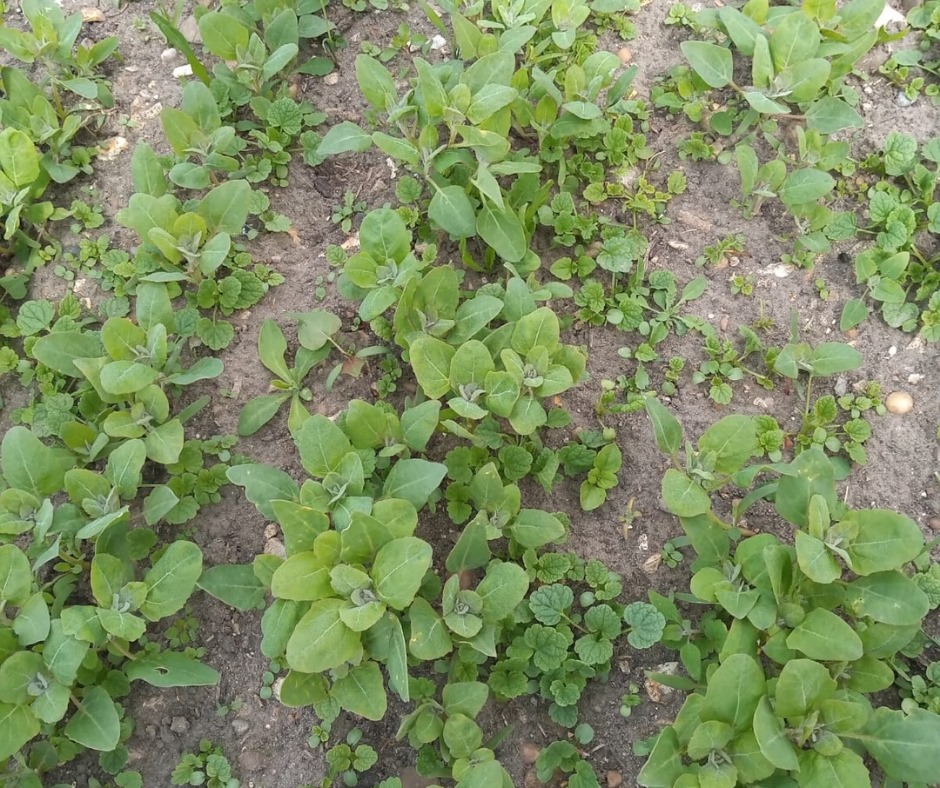
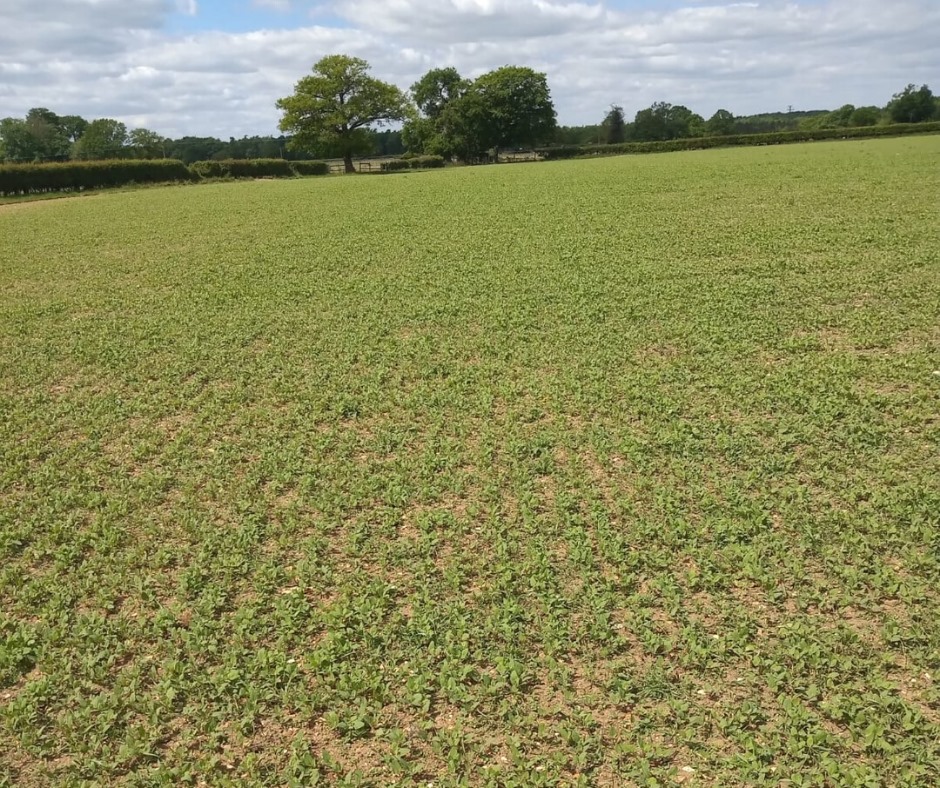
On our own farm in Shropshire, May was the time when we had out first hoeing session for the season. We don’t use pesticides on our quinoa, so we hoe some of our fields to control the weeds mechanically. At this point, the crops were looking good. However, we were in the midst of a dry spell and heatwave, so the crops were definitely starting to look a little thirsty.
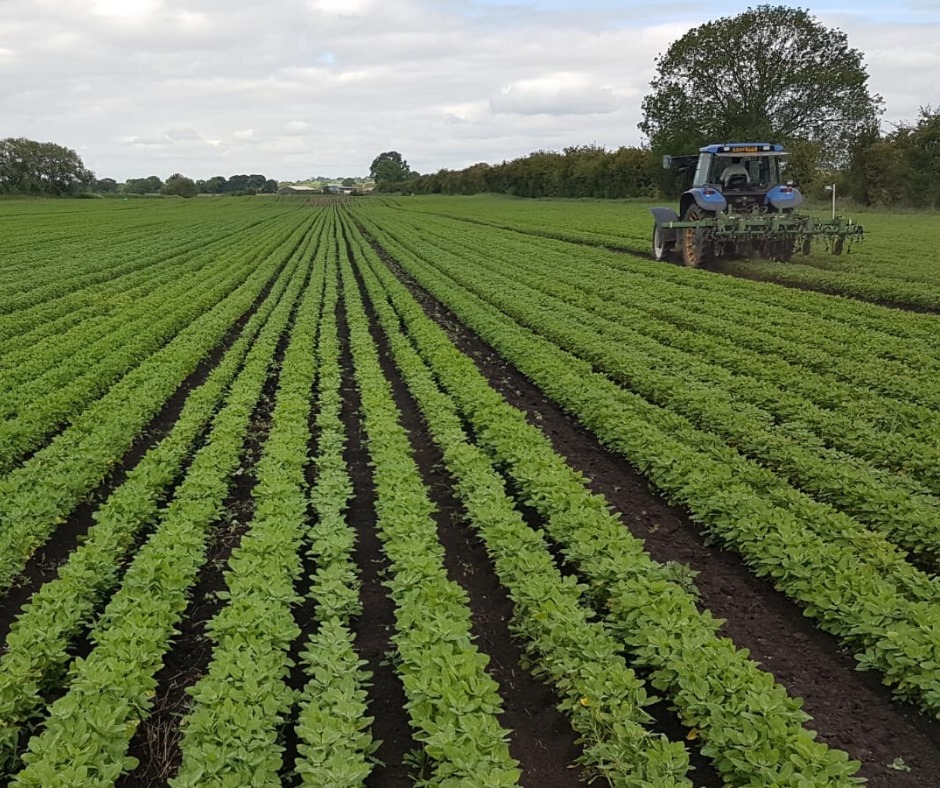
June
As we moved forward into June, it became obvious that we were in the midst of a drought and that crops all over the UK were suffering from a lack of moisture. Our quinoa was just starting to show signs of drought stress too, so on our farm, we decided to start irrigating our crops from the water held in our reservoir. Quinoa wasn’t the only crop to receive a drink. I took this photo of our maize crop being irrigated, a situation which is really unheard of in the UK!
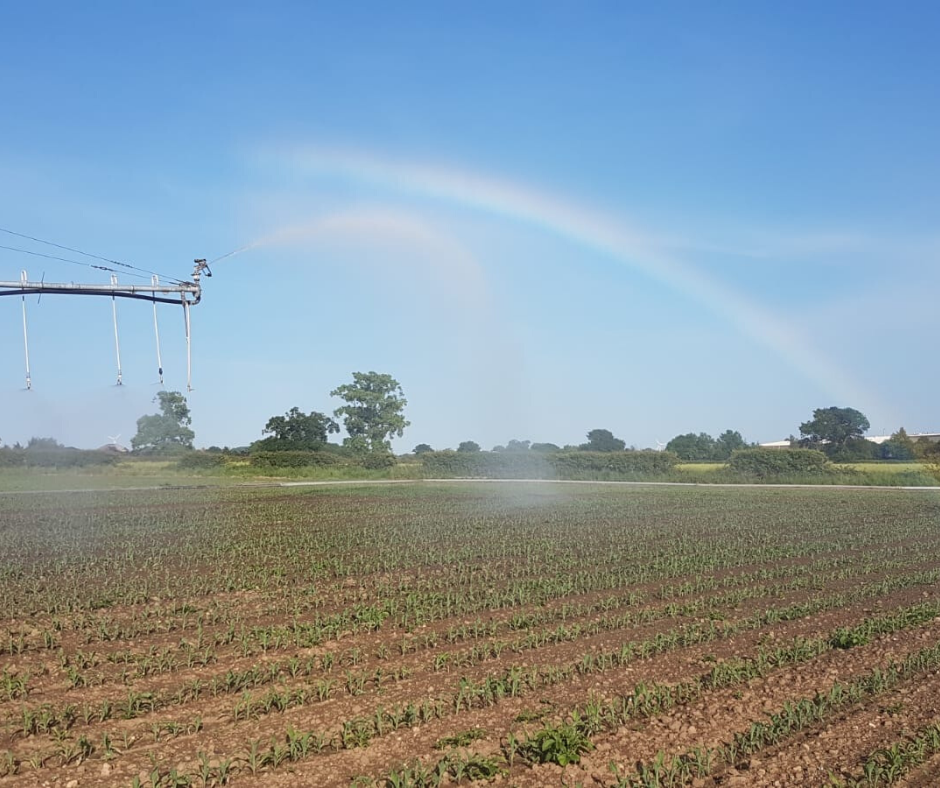
As we edged towards the end of June, the lockdown was eased, and I was able to get out and about a little further, visiting more of our growers. I drove to a farm near Reading to visit Tim May, who grew his first-ever crop of organic quinoa with us this year, and what a great crop it was. Tim’s chalky soil seemed to suit the crop really well, and we were seriously impressed at Tim’s first try at growing the crop.
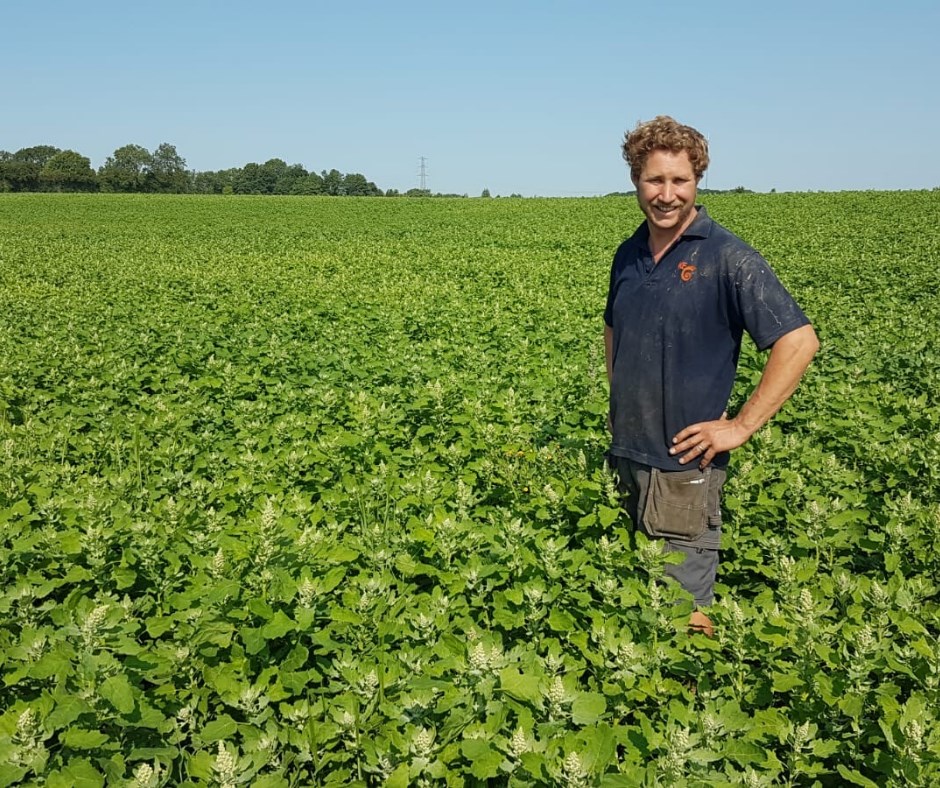
And now we come to one of my favourite pictures of the season. As mentioned earlier, we were trialling several new quinoa varieties this year, and within this field of red quinoa, you can see where we popped in our black quinoa trials as a comparison. The black quinoa grew nicely, and the contrast against the red quinoa (whose leaves and flowers are actually…. green) was quite stark within the field. I’m glad these fields were sown using GPS to ensure we got a perfectly straight line between the varieties!
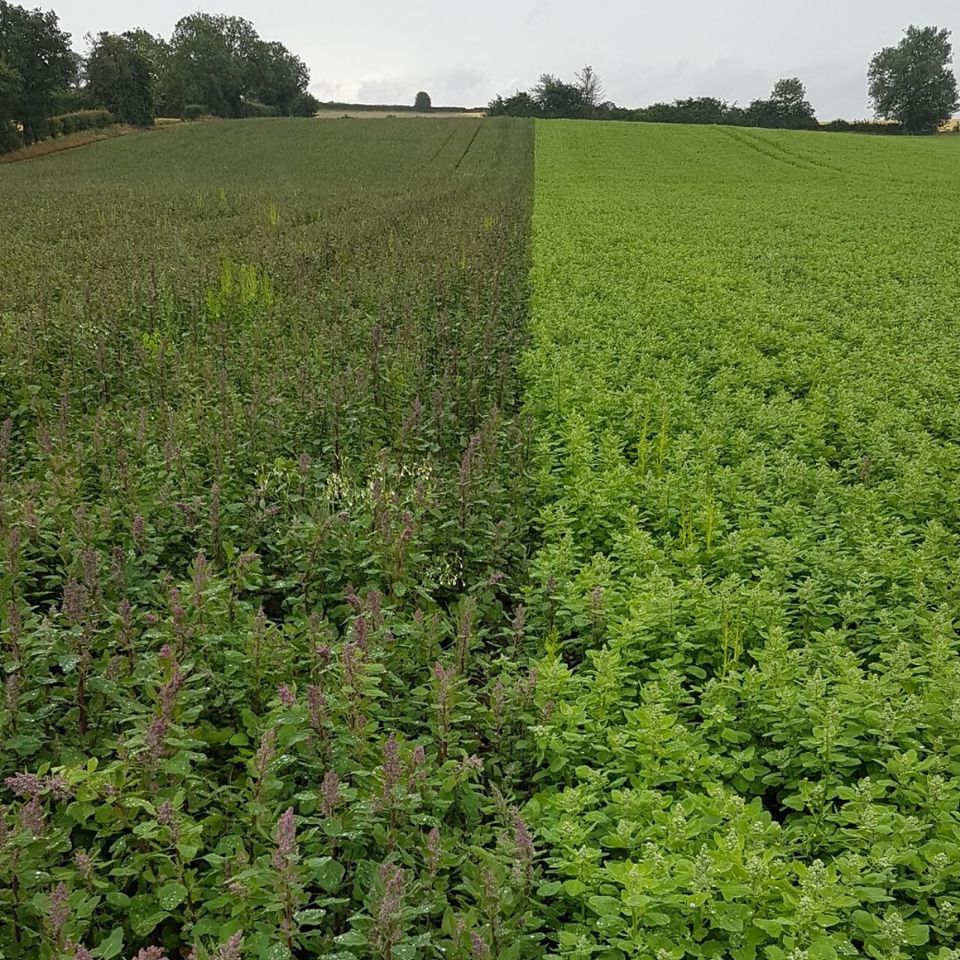
Within our 2020 variety trails, we found that we have an abundance of genetic diversity which is very encouraging news. We are screening many lines for their adaptation for the UK climate, and are continually monitoring the trials to identify robust plants that will produce high-quality seed. We managed to get hold of drone footage of this year’s trials thanks to Eurofins Agro UK, who undertook the trials for us, such overhead footage really helps give a visual overview of the difference between the lines.
Watch the video here
July
As July progressed, we began to find the first young quinoa seeds starting to appear. It’s always a relief to actually find seeds appearing! Due to the dry weather we had in Spring, our quinoa didn’t have the best growing conditions, to begin with. However, the heavy rain we received towards the end of June really pushed the quinoa’s growth forward and made up for some lost time.
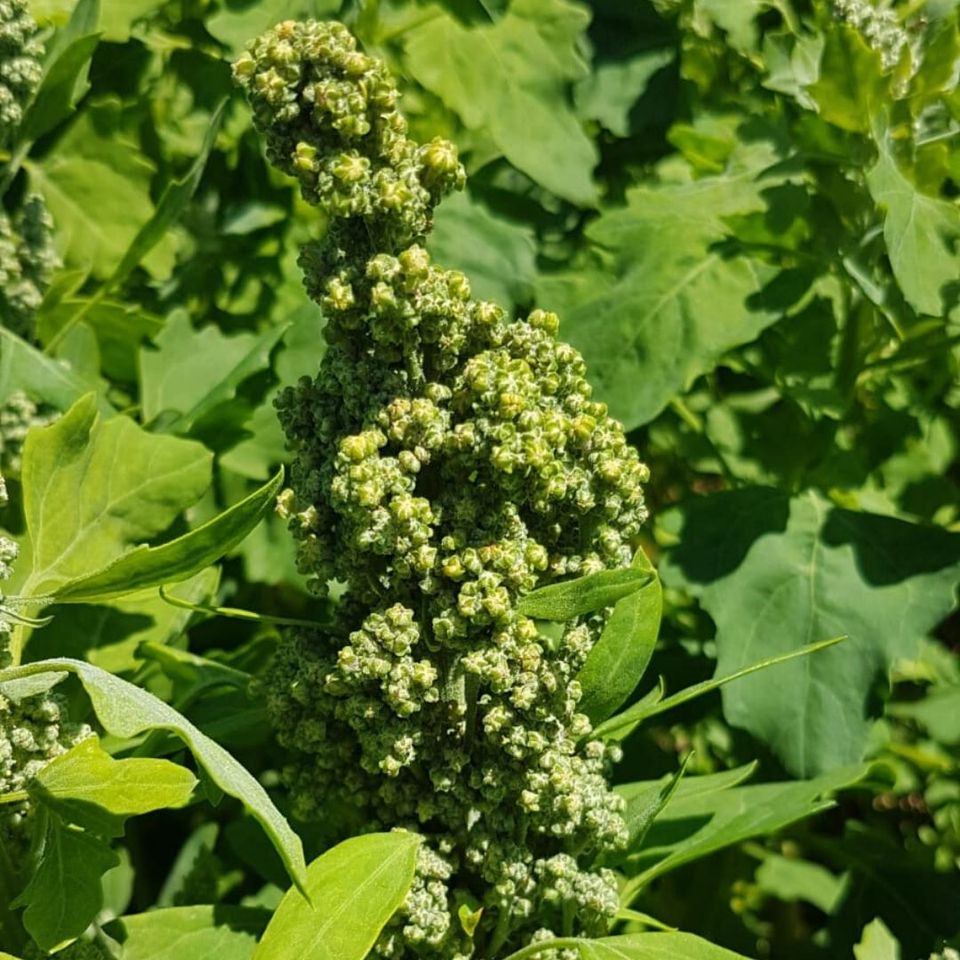
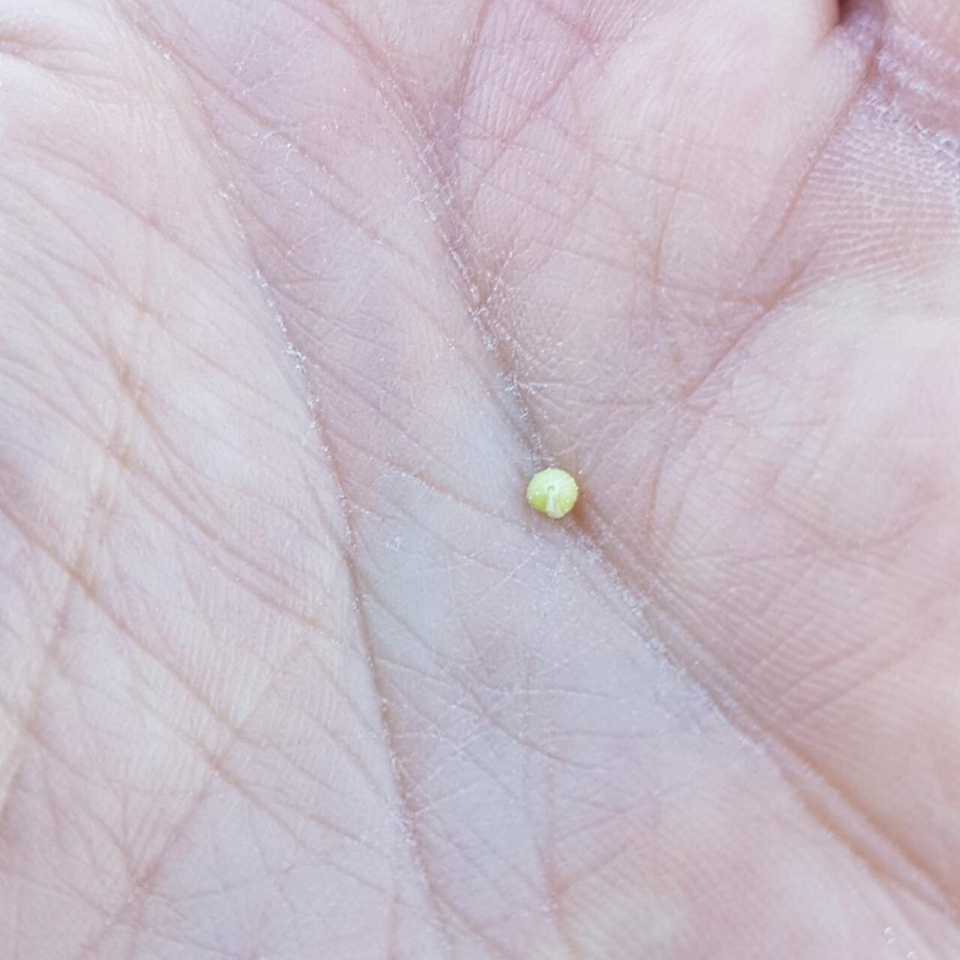
August
Jumping forward to August, Stephen took a trip down to Bath to inspect a new commercial variety we were growing for the first time with our grower Emily. This new variety not only looks pretty with a wide range of colours, but it yielded well and with a big seed size, so hopefully we’ll experiment with this variety further in 2021.
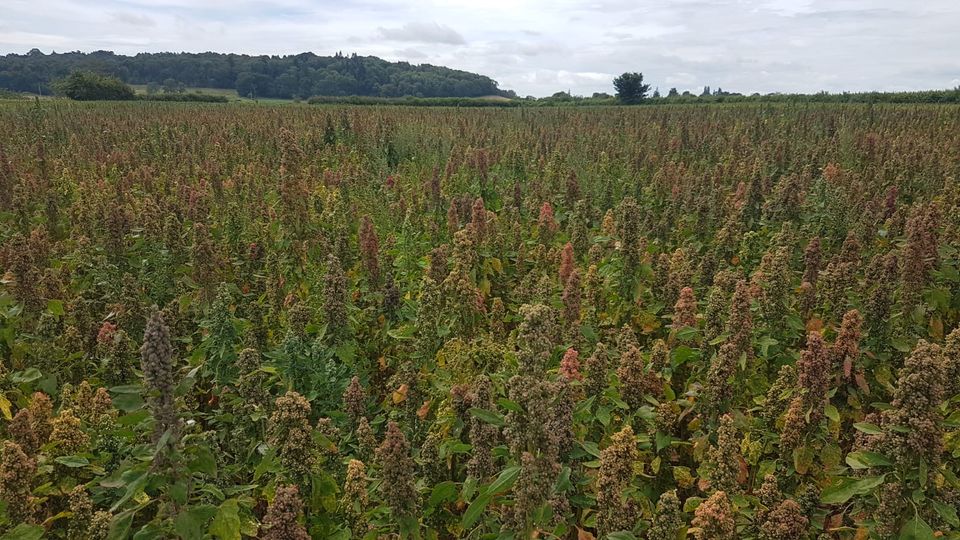
Finally, as we neared the end of August, the combines began to roll. Out of the usual procedure, our farm in Shropshire was the very first to start harvesting, which is typically a place reserved for more southern growers. The rain hampered us at first, but following a wet start, we were fortunate to get a long dry period for all the growers to get harvested up, in far better conditions than in the 2019 season.
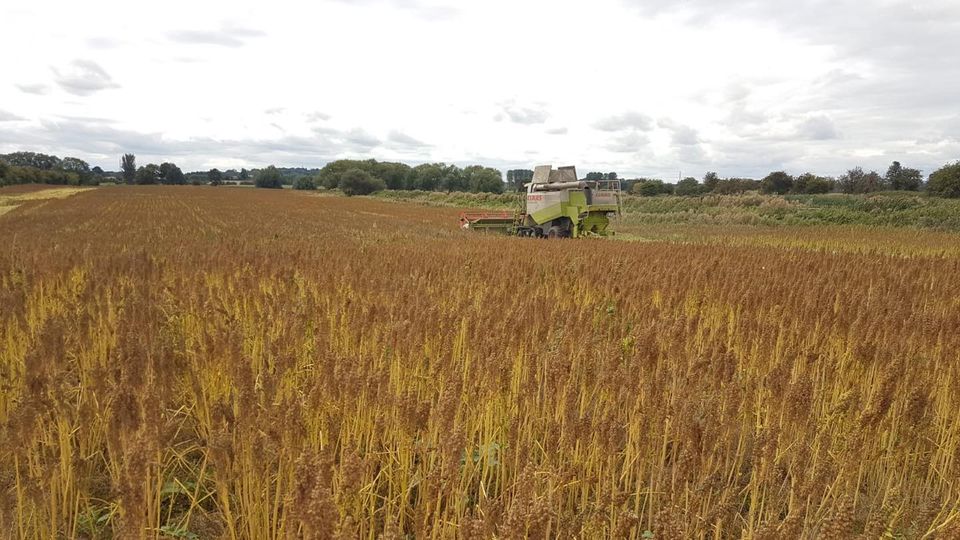
Summary
Overall, I feel that 2020 was a successful year for both our growing quinoa and for our experimental trials, despite some of the challenges that the good old British weather and the current pandemic brought us. We look forward to updating you on the results of our harvest in the upcoming weeks.

 Basket
Basket